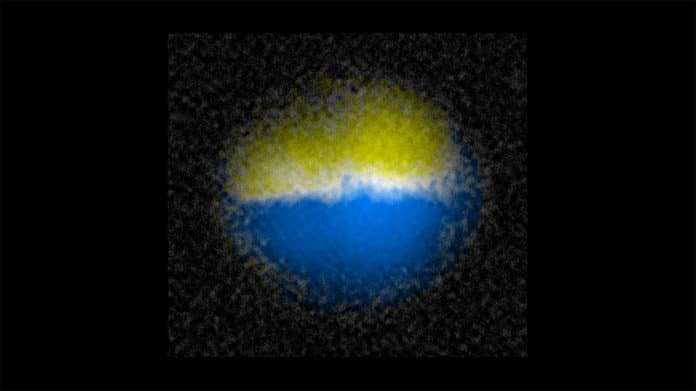A new study by the University of Chicago scientists could help better understand exotic quantum particles. In their study, scientists have created a new kind of quantum object at will in the laboratory: “domain wall.”
During one of their experiments, scientists noticed an interesting emergence in atoms at extremely low temperatures. Under the right conditions, atoms can segregate into domains and form a “wall” at the junction where they meet. This domain wall behaves like an independent quantum object.
Ph.D. student Kai-Xuan Yao, the first author of the study, said, “It’s kind of like a sand dune in the desert—it’s made up of sand, but the dune acts like an object that behaves differently from individual grains of sand.”
Scientists also observed the surprising behaviors of this domain wall.
James Franck Institute and the Enrico Fermi Institute said, “We have a lot of experience in controlling atoms. We know if you push atoms to the right, they will move right. But here, if you push the domain wall to the right, it moves left.”
These domain walls are part of a class known as “emergent” phenomena, which means that they appear to follow new laws of physics due to many particles acting together as a collective. Scientists studied these phenomena to understand a set of rules called dynamical gauge theory. The dynamical gauge theory describes other emerging phenomena in materials and the early universe.
Prof. Cheng Chin from the University of Chicago said, “There may be applications for this phenomenon in terms of making programmable quantum material or quantum information processor—it can be used to create a more robust way to store quantum information or enable new functions in materials. But before we can find that out, the first step is to understand how to control them.”
Journal Reference:
- Yao, KX., Zhang, Z. & Chin, C. Domain-wall dynamics in Bose-Einstein condensates with synthetic gauge fields. Nature 602, 68–72 (2022). DOI: 10.1038/s41586-021-04250-3
